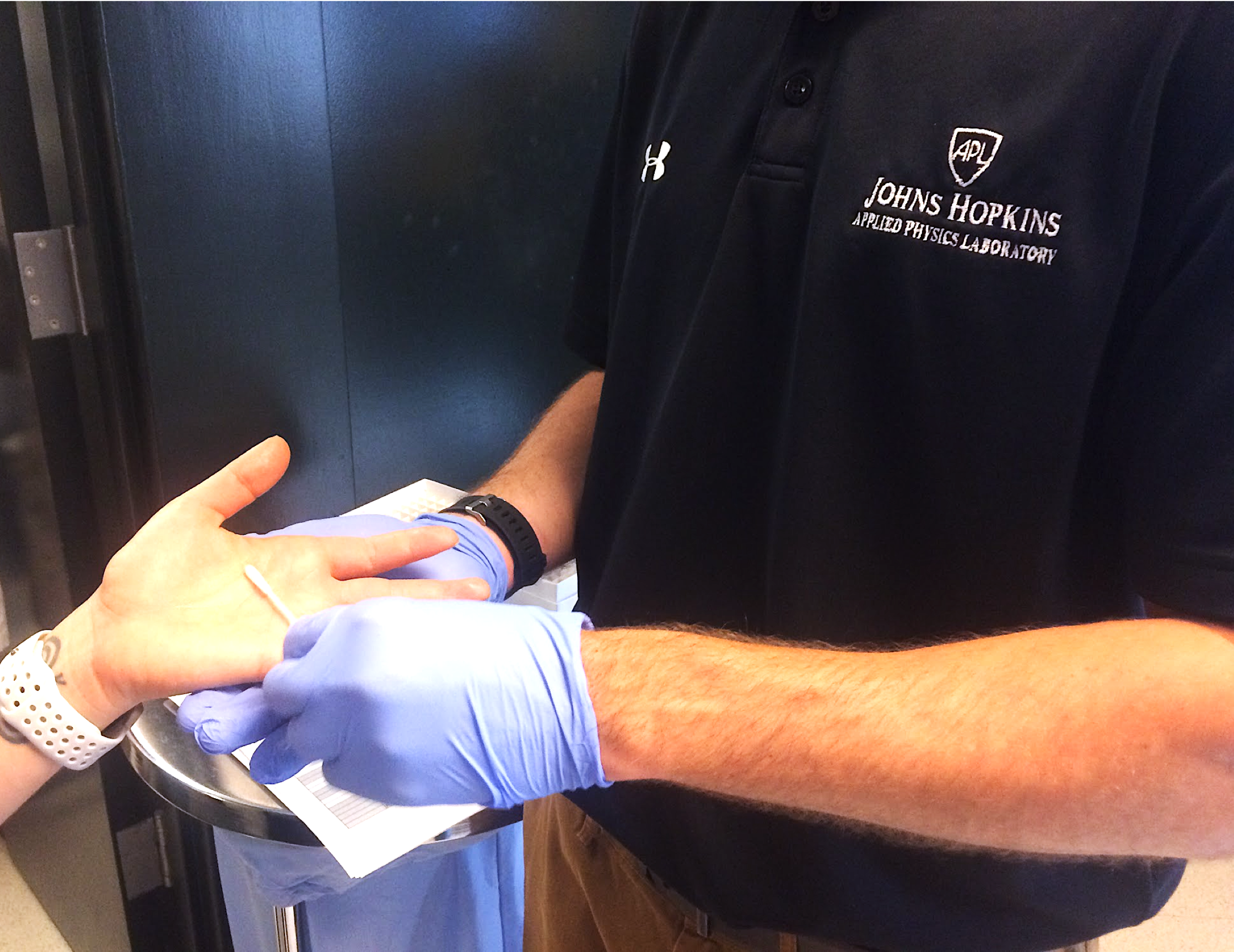Press Release
Johns Hopkins APL and Medicine Scientists Develop Tool to Reduce Healthcare Associated Infections
The Centers for Disease Control and Prevention reports that nearly 1 million healthcare associated infections (HAIs) occur annually, and many of the approximately 100,000 associated deaths occur in patients with compromised immune systems. While there are signs of a downward trend in this infection rate as hospitals adopt new protocols, these infections continue to represent a significant — and preventable — burden.
What’s missing, says Briana Vecchio-Pagán, a bioinformatics scientist at the Johns Hopkins Applied Physics Laboratory (APL), in Laurel, Maryland, is is a quantified and actionable understanding of risk factors and bacterial transmission dynamics in at-risk environments.
Scientists at APL, in collaboration with Johns Hopkins Medicine clinicians in Baltimore, have developed a platform to monitor the transmission of infections in medical settings, a tool that will help reduce instances of HAIs.
Leveraging APL’s extensive expertise in microbial sequencing and trackable technologies, Vecchio-Pagán and Matthew Pellicore, a biomedical engineer at APL, teamed with clinicians at the Cystic Fibrosis Adult Pulmonary Outpatient Clinic at Johns Hopkins Medicine to develop a model of the transmission of bacteria in a health care setting that takes into account profiles of the people and surfaces and their interactions with one another.
This summer, over the course of four days, the team placed Bluetooth low energy (BLE) beacons on clinic surfaces and on study participants. An APL-developed smartphone app captured the interaction of patients and health care workers with surrounding beacons and pushed that data to a server compliant with federal laws restricting release of medical information. The frequency and duration of the interactions were used to create a temporal interaction network consisting of people and clinic surfaces.
The researchers simultaneously collected more than 1,000 swabs from surfaces throughout the clinic and from participant hands and nasal passages. These swabs underwent sequencing of their genomic content to determine the relative abundance of bacteria present. The patients also completed a survey of their personal hygiene practices and health history.
The team then combined these three data types to create a spatiotemporal model of potential transmission events.
The three most abundant bacteria observed were Staphylococcus (which causes staph infections), Streptococcus (which causes strep throat) and Acinetobacter (another major cause of HAIs). However, a diverse range of bacterial species were observed across individuals and clinic surfaces.
In some cases, pathogenic bacteria were found to be enriched on key surfaces of interest. “We discovered a significantly increased abundance of Pseudomonas on the HEPA filters within the pulmonary function testing area where patients tend to cough more frequently,” Vecchio-Pagán said. “The high abundance of this particular microbe, which frequently causes infections in the cystic fibrosis population, indicates hygienic practices could be modified to reduce patient exposure in this area of clinic.”
This model will be used to inform best practices for infection control by capturing variables or personal habits most predictive of transmission events.
“Our pilot study demonstrates that these data types can be leveraged to identify personal hygienic practices and interaction patterns which lead to increased likelihood of transmitting or acquiring an infection in a clinical setting,” Vecchio-Pagán said. “Ultimately, larger studies invoking this technology will allow us to reinvent sterile spaces and best practices, thereby reducing exposures of troops, patients or any other high-risk group.”
